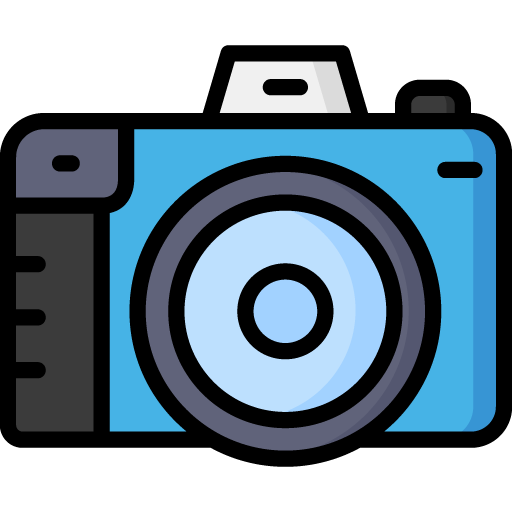YouTube thumbnails are the billboards of the digital age. They are the first impression, the spark of curiosity, the visual cue that determines whether someone clicks or keeps scrolling. With millions of videos uploaded every day, standing out requires more than just good design—it demands a deep understanding of human psychology.
This blog explores the psychological principles that make YouTube thumbnails compelling, click-worthy, and ultimately effective in driving traffic and engagement. Whether you’re a seasoned creator or just starting out, these insights can help you craft thumbnails that truly perform.
The Psychology of YouTube Thumbnails
Understanding the Psychological Factors That Make Thumbnails Compelling and Click-Worthy
1. First Impressions and the Power of Visual Processing
The human brain processes visuals 60,000 times faster than text. When a potential viewer scrolls through YouTube, they make snap decisions in milliseconds. Your thumbnail has a tiny window to make an impact.
Key Psychological Factors:
- Visual Dominance: Humans are hardwired to respond to images more quickly than words.
- Peripheral Recognition: Even without reading titles, people can detect emotional cues, colors, and familiar faces.
Design Tips:
- Use bold, clear visuals
- Ensure facial expressions are easily identifiable
- Avoid clutter and focus on one strong visual idea
2. Emotional Triggers Drive Clicks
Emotion is a powerful motivator. Thumbnails that evoke curiosity, surprise, happiness, or even fear tend to outperform neutral designs.
Psychological Insight:
- Emotionally charged images activate the amygdala, which helps determine importance and memory retention.
Trigger Examples:
- A shocked face or wide eyes suggests excitement or urgency
- A tearful or angry expression hints at a dramatic or heartfelt story
Design Strategy:
- Show real emotion in your face or visuals
- Use contrasting colors to emphasize intensity
3. The Power of Faces and Eye Contact
Human faces are attention magnets. Research shows that thumbnails with close-up faces get more clicks, especially when the subject makes eye contact with the viewer.
Why It Works:
- The brain has specialized neurons for facial recognition
- Eye contact creates a sense of connection and curiosity
Tips for Faces in Thumbnails:
- Use high-resolution images with strong expressions
- Experiment with different emotions (shock, joy, confusion)
- Use only one face when possible to reduce visual competition
4. Color Psychology: Setting the Mood
Colors evoke emotions and set expectations. Choosing the right color palette for your thumbnail can subconsciously influence how viewers feel about your video before they even click.
Color Associations:
- Red: Urgency, excitement
- Blue: Trust, calm
- Yellow: Optimism, energy
- Green: Growth, health
- Black/Dark Tones: Mystery, drama
Tips:
- Use high contrast to help thumbnails pop against YouTube’s white or dark theme
- Stick with brand colors for consistency, but adjust saturation and brightness for impact
5. Text and Typography: Less is More
While visuals dominate, text can clarify or enhance a message—but only if used sparingly and strategically.
Psychology in Action:
- The brain favors simplicity. Too much text leads to cognitive overload and lower click-through rates.
- Viewers often read only 2-3 words max in a thumbnail.
Tips:
- Use bold, legible fonts
- Keep words under five
- Position text for easy scanning (usually top or left aligned)
6. Curiosity Gaps and Incomplete Information
Humans are naturally curious. Thumbnails that create a “curiosity gap” compel viewers to click to resolve the unknown.
Examples:
- Blurring or censoring part of the image
- Using question marks or cliffhanger titles
- Visual metaphors that hint but don’t tell
Tips:
- Show part of the story, not all of it
- Use text like “You won’t believe…” or “What happened next will surprise you” (use sparingly to avoid clickbait)
7. Repetition and Pattern Recognition
The human brain loves patterns. When viewers recognize a consistent thumbnail style from a channel, it builds trust and familiarity.
Psychological Benefit:
- Familiarity breeds trust. Returning viewers are more likely to click again.
Strategy:
- Maintain consistent color schemes, font choices, and layout structure
- Develop a visual brand identity for your channel
8. Visual Hierarchy: Guide the Eye
A strong visual hierarchy ensures that viewers process the most important elements first.
Design Psychology:
- Size and contrast guide attention
- Viewers process from top-left to bottom-right
Tips for Strong Hierarchy:
- Make the main subject the largest element
- Use bright colors or borders to highlight focal points
- Avoid too many competing elements
9. The Fear of Missing Out (FOMO)
FOMO is a powerful psychological trigger. Thumbnails that imply scarcity, urgency, or a time-sensitive opportunity can drive clicks.
Examples:
- Timers, countdowns
- Titles like “Before it’s gone” or “Limited time only”
- Visuals of sold-out events or exclusive behind-the-scenes looks
10. Social Proof and Popularity Cues
People tend to follow the crowd. Thumbnails that signal popularity can increase perceived value.
How to Show It:
- Screenshots of high view counts or comments
- Phrases like “Viral video” or “Trending now”
- Featuring known personalities or influencers
11. Contrast with Competitors
Standing out in a sea of thumbnails requires visual contrast. One way to do this is to zig when others zag.
Tips to Differentiate:
- If your niche uses loud colors, try minimalism
- If others use text-heavy thumbnails, go visual-only
- Break pattern fatigue with occasional experimental designs
12. Cultural and Contextual Awareness
Different audiences respond to different cues. Colors, expressions, and gestures may have varying meanings across cultures.
Be Mindful Of:
- Audience demographics
- International symbols and interpretations
- Sensitivities that could cause confusion or offense
13. Testing and Iteration: Data-Driven Design
Even the most well-designed thumbnail is a hypothesis. Testing different versions helps refine your approach based on real viewer behavior.
Tools for A/B Testing:
- TubeBuddy
- VidIQ
- YouTube’s built-in analytics
What to Test:
- Facial expressions
- Text vs. no text
- Colors and layouts
Final Thoughts: Design for the Mind, Not Just the Eye
YouTube thumbnails are where art meets science. By understanding the psychological principles that drive human behavior, you can craft thumbnails that not only look good but perform better.
Ultimately, the goal is to connect with your audience’s instincts, emotions, and curiosity—in just a single frame.
Thumbnail Success Checklist:
- Show faces with strong emotions
- Use high-contrast colors and bold text
- Create curiosity without misleading
- Stay consistent with your brand
- Test variations and analyze results
In a world flooded with content, psychology gives your thumbnails an edge.







 Edit Your Footage
Edit Your Footage
Leave a Reply